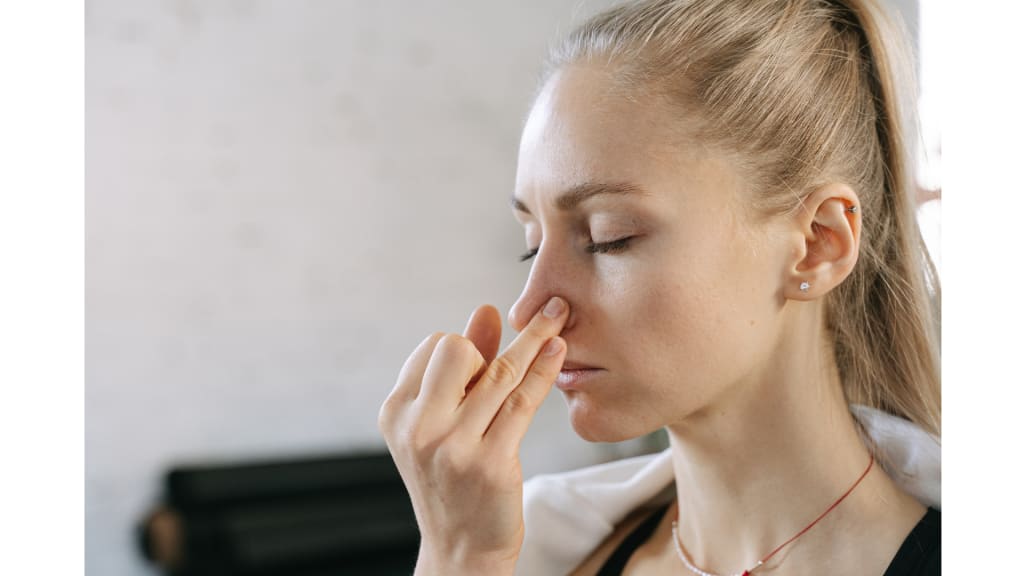The Science and Art of Breath Work: Achieving Balance and Calm
Breath Work Techniques

We breathe in and out around 25,000 times each day. But, experts on the matter agree, including pulmonologists and specialists, that a large portion of us are treating it terribly — breathing too quickly and too shallowly.
Over the years, research has begun to affirm what ancient societies all over the world have long accepted: Breathwork, the act of correcting and controlling your breathing through basic exercises, can further develop well-being and prosperity.
At rest, your breathing should be slow and steady, somewhere in the range between 12 and 20 breaths per minute. Intentionally easing back that significantly further — to between five to seven breaths per minute at rest — can assist with reducing blood pressure, managing heart rate, and lifting mood. Scientists have likewise detailed that breathing gradually can reduce chronic pain, stress, and depression, and bolster fitness and energy levels.
One study found that breath work helped recuperating Coronavirus patients return to healthy respiratory rates.
When sick, stressed, or anxious, many individuals begin breathing quickly from the highest point of the chest, which initiates the body's sympathetic nervous system, said Dr. Melis Yilmaz Balban, a neurobiology scientist at Stanford University and co-author of a study published on how breath work can be utilized to lift ood. Taking in this manner raises your heart rate, suppresses digestion, and uplifts the mind's propensity to identify risk, whether genuine or envisioned.
Many individuals find it challenging to slow their breathing even after a danger or source of stress has subsided and may wind up creating unfortunate breathing propensities in the long haul. At the point when breath, heartbeat, and pulse stay raised, "that stressful day turns into a stressful week turns into a stressful month," said Stuart Sandeman, a London-based mentor who assists individuals with working on their breathing and is the author of "Breathe In, Breathe Out."
The mechanism that makes a great deal of breath work powerful for upgrading mental, emotional, and physical well-being is that it effectively dials breathing back, said Dr. Raj Dasgupta, a pulmonologist and sleep medicine expert at Keck Medication at the University of Southern California, who uses breathing exercises with patients who have persistent lung illnesses or sleep deprivation. At the point when you slow your breathing down, "the parasympathetic framework — what we call the 'rest and digest' system — ideally dominates and helps calm you down," he said.
Furthermore, "with breath work, we are compelled to focus on our breath and our inside state," said Dr. Yilmaz Balban. "It carries you into the occasion." The study found that even focusing on how you normally breathe when matched with other mindfulness practices, was pretty much as successful as medications to treat uneasiness problems.
Dr. Dasgupta noticed that regardless of whether you have health conditions that influence breathing, it's safe to attempt to develop and slow your breaths little by little. "At the point when my persistent lung sickness patients begin having an eruption and get that sensation of shortness of breath they need their medications," he said. "Yet, I let them know that they should focus on utilizing that diaphragm muscle and dialing back the respiratory rate."
The research into breathing maintains what "yogis and meditators have been discussing for years," Mr. Sandeman said. "These more established customs knew the advantages of breathing well," he added, and Western medication is simply starting to catch up.
The following are three basic breathing activities that the pulmonologists, sleep doctors and scientists consulted for this story suggest.
4-4-8 breathing
Attempt this activity if you are feeling restless or frightened.
What to do: Calmly inhale in for four counts, pause your breathing for four counts, and afterward breathe out for eight counts. Repeat.
Why this works: A few studies have found that deliberately stretching out your breath to endure longer than you breathe in — which is what this exercise means to do — can rapidly sluggish your pulse and reduce blood pressure. Extending the breath out is additionally something that the body tends to do every five minutes or so, Dr. Yilmaz Balban said, as a way for it to "sort of reset the breathing beat" and quiet down.
Alternate nostril breathing
This activity, acquired from yoga practices, can assist with further developing concentration.
What to do: Close your right nostril and take in through your left nostril for a count of four. Presently close your left nostril and inhale out from your right nostril for a count of four.
Why this works: Old Hindu teachings said that every nostril was answerable for various capabilities in the brain and body, and purposefully exchanging between the left and right nostrils would adjust those two systems and achieve center, mental clearness, and calm.
All the more as of late, specialists have discovered restricted proof to help those lessons, Dr. Yilmaz Balban said, with small studies demonstrating that the right nostril is associated with the thoughtful system — our fight or flight mode — while the left nostril is associated with the more settled parasympathetic system. At any rate, intentionally exchanging between the two nostrils assists you with blocking out racing thoughts and spotlight on the occasion, Dr. Yilmaz Balban added.
Box breathing
The U.S. Naval Force SEALS utilizes this method to get ready for training, and even before battle since it can upgrade mental concentration.
What to do: Take in for a count of four, pause your breathing for a count of four, breathe out for a count of four, and pause your breathing again for a count of four.
Why this works: By making the inward breaths, breath holds, and breathes out equivalent, you force your breathing into a consistent beat, Mr. Sandeman said, keeping you alert and invigorated instead of calming you into a loosened-up state.
You can likewise have a go at stepping through the breathing test again to check whether you can dial your breath rate back.
About the Creator
shanmuga priya
I am passionate about writing.
Enjoyed the story? Support the Creator.
Subscribe for free to receive all their stories in your feed. You could also pledge your support or give them a one-off tip, letting them know you appreciate their work.






Comments
There are no comments for this story
Be the first to respond and start the conversation.